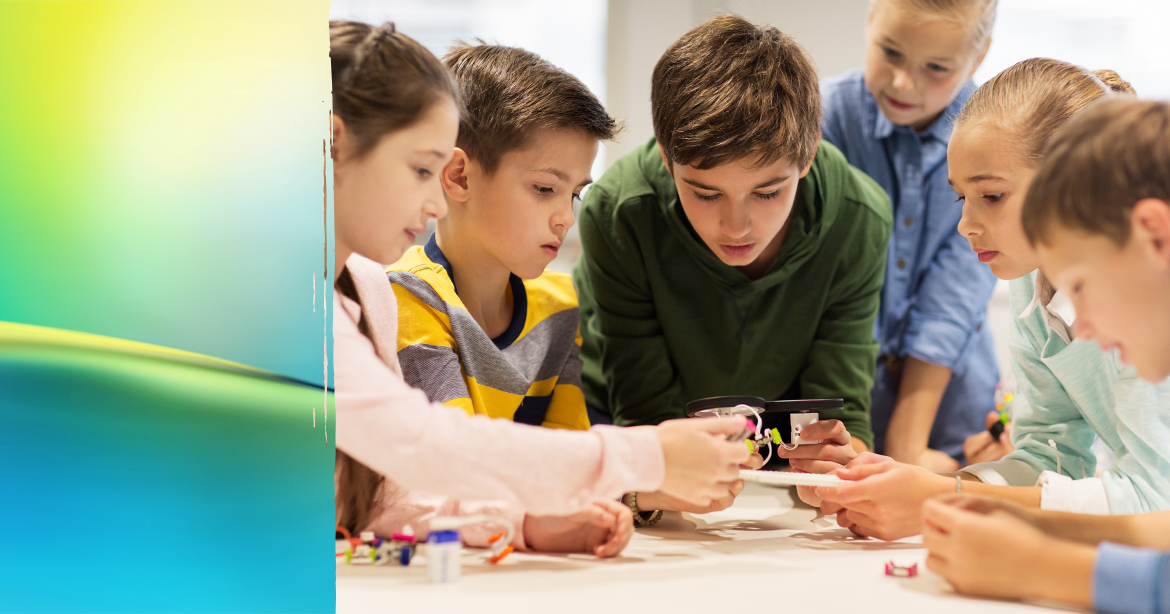How Creativity in Education Improves Outcomes

When you think of creativity, what comes to mind? Maybe a painter standing in front of their easel, a sculptor with a hammer and chisel, or a film director standing behind a camera. In artistic fields, creativity is a powerful tool.
But that’s just one piece of a much larger puzzle.
Creativity can be found in every aspect of life, from problem-solving and innovation to entrepreneurship and social change. A 2010 survey of over 1,500 CEOs from 60 countries found that creativity was the most important leadership quality for navigating an increasingly complex world. And yet, despite its importance, creativity can often be undervalued in education, which prioritizes memorization and standardized testing.
At MUSE Global, creativity is essential. Let’s review why and look at some practical strategies for using creativity in the classroom.
Why is creativity important in education?
Creativity might seem like a nebulous, ungrounded idea, but it can actually help with a student’s overall learning. According to a 2019 study by Gallup, K-12 instructors who frequently assigned work that required students to think more creatively were more likely to see higher-order cognitive skills – like critical thinking and problem-solving – in their students than those who didn’t. Those students also had higher learning retention than the students who weren’t assigned creative work.
Using creativity in the classroom can also be a strong motivator for learning. In September 2020, a team from the graphic design app Canva spoke with 1,000 K-12 educators on the subject of creativity in the classroom. 64% of teachers surveyed said that creativity leads to more engaged, confident learners. By prioritizing student-centered, creative work, schools could ” increase engagement and prepare learners for better outcomes.”
More than that, using creativity in education makes learning fun. By changing the ways in which schoolwork is presented, you provide a much more entertaining avenue for students to receive the same knowledge. It’s one of the reasons why passion-based learning is one of the Five Pillars that MUSE Global School is built on!
How can educators use creativity in the classroom?
So now that we know what creativity is and why it’s important in education, how can we implement it?
A good way to start is by focusing less on the reproduction of information and more on critical thinking and problem-solving. Rather than relying solely on the memorization methods from the past, ask open-ended questions that force your students to think about the subject in a new way. And after you ask those questions, give them the time needed to really think about them to build those new connections.
You can also work to build an appropriate physical and social environment for creativity. Socially speaking, we need to make sure that students feel safe to express their ideas. It’s the parent or educator’s job to hear their ideas and to offer feedback in a respectful way. We also need to help students develop the skills and attitudes needed for creativity. Encouraging intellectual curiosity is essential. According to The Education Hub, “Students who are more intellectually curious are open to new experiences and can look at problems from multiple perspectives, which builds creative capacity.”
Physically speaking, some spaces just aren’t conducive to creativity. Experiment with different desk configurations, work in groups, or even take the class outside for the day. At MUSE Global School, our teachers use our “outdoor classroom” as a way to take learning on the go. Our Outdoor Education Program starts in Early Childhood Education with hikes around our Calabasas campus and continues into high school with 3-5 day trips to local national parks.
Finally, look for opportunities to bridge subjects to get your students thinking outside the box. Whether that’s through art, science, or anything else you can think of, taking the time to look at something through another lens can help students make new connections.
Wrapping up
While it’s true that being creative is necessary to create art, it’s also a valuable part of everything else that we do. So much so that it was listed as the #1 skill to have in 2019 and 2020 by LinkedIn. And according to a study by Adobe, while 85% of respondents agree that creative thinking is critical in their career, 32% don’t feel comfortable thinking creatively in their workplace.
We need to learn to support creative thinking now to support our students later.

